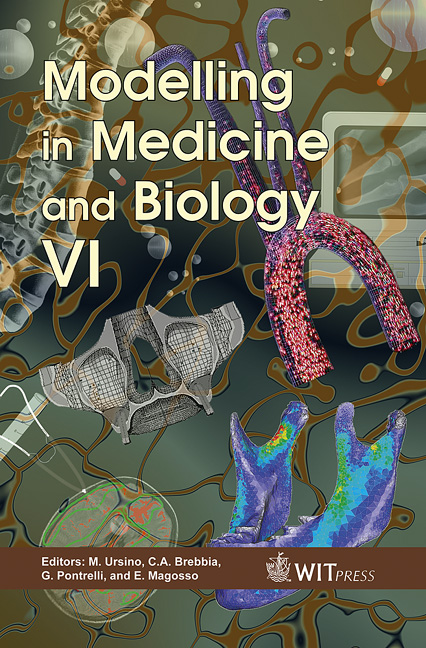Cardiotherapeutical Results From The Coupled BIOMED And GUYTON Models
Price
Free (open access)
Transaction
Volume
8
Pages
10
Published
2005
Size
644 kb
Paper DOI
10.2495/BIO050141
Copyright
WIT Press
Author(s)
J. Werner, C. Welp, D. Böhringer & M. Hexamer
Abstract
The GUYTON model is still the most comprehensive cardiovascular model with a solid physiological background. However, it does not account for short term pulsatile processes. We therefore developed a pulsatile model (BIOMED) of the cardiovascular system and coupled it to the well documented modules of the GUYTON model. The BIOMED model focuses on the systolic wall tension progression, subject to the Frank-Starling- and Hill-mechanisms, and on the simulation of the processes due to the cardiac valves. After successful validation of the dynamics and the steady-state behaviour of the decisive variables, pressure, volume and flow, by comparing them with published experimental and clinical recordings, we used the coupled systems to gain insight into the influences of impaired valve function and ventricular relaxation disorders on cardiac output, the importance of atrial contraction to ventricular filling, the significance of the choice of the adequate cardiac pacemaker and the need for an implementation of an av-delay, dependent on cardiovascular strain, in pacemakers. This contribution focuses on the problem that pacemaker patients suffering from diastolic relaxation disorders are particularly dependent on an adjusted avdelay setting. The simulation results suggest the use of the derivative of ventricular pressure, correlating with peak endocardial acceleration, to control av-delay adaptation. Keywords: pulsatile model, Guyton model, pacemaker, av-delay, relaxation disorder, peak endocardial acceleration.
Keywords
pulsatile model, Guyton model, pacemaker, av-delay, relaxation disorder, peak endocardial acceleration.





